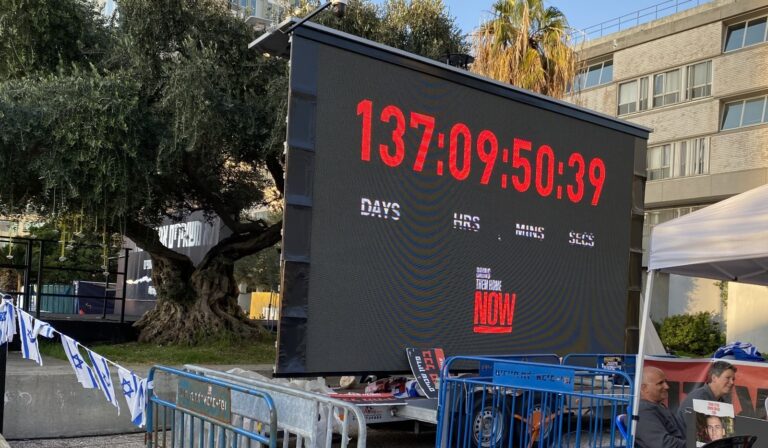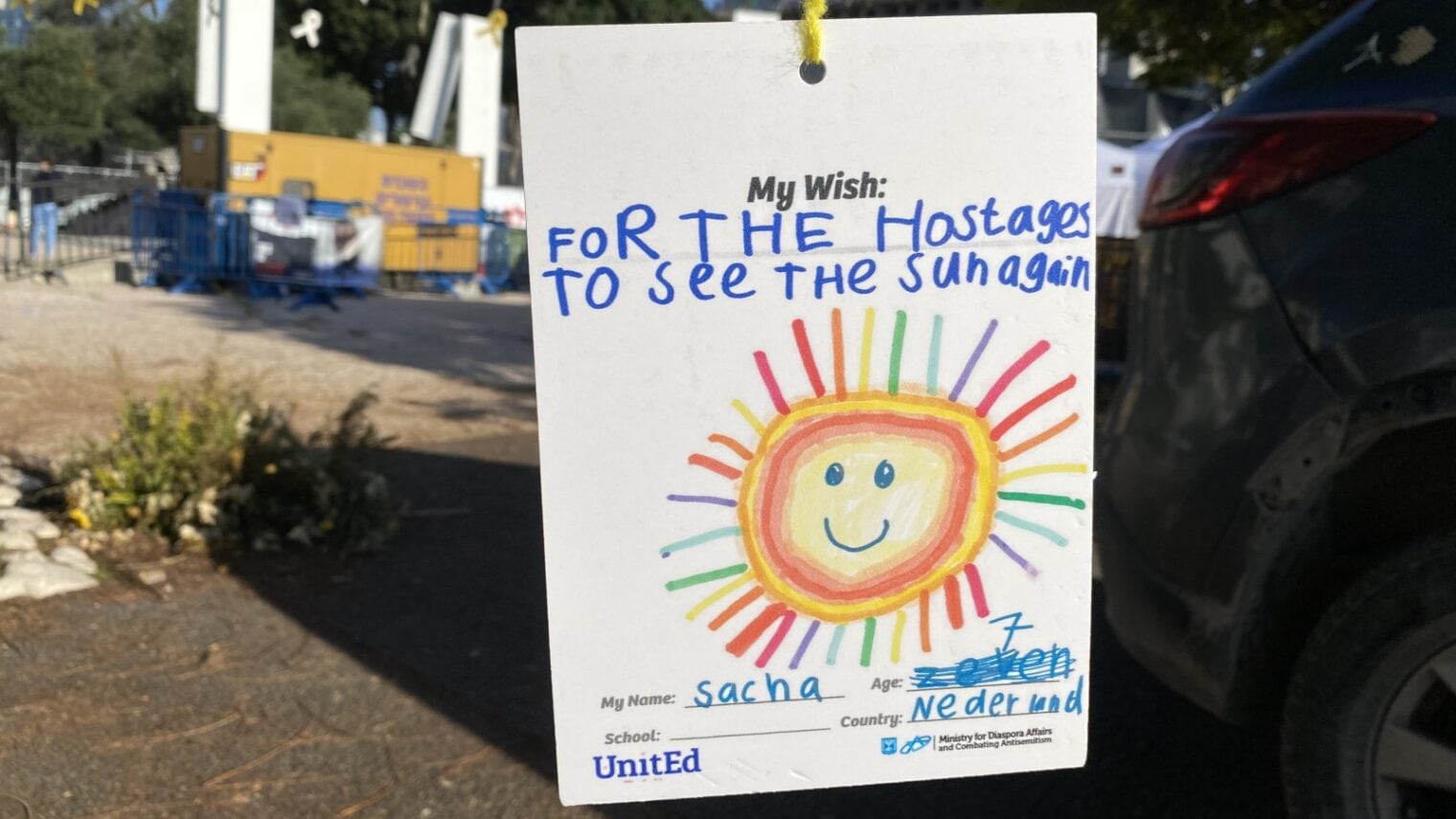I have never met Omri Miran or Tzahi Idan. They’re not even distant relations as far as I know.
But I am drawn toward posters of their faces hanging inside the tent where members of Kibbutz Nahal Oz take turns speaking with the public and the press at Hostages and Missing Square in the plaza outside the Tel Aviv Museum of Art.
On October 7, Hamas terrorists murdered 14 people on Kibbutz Nahal Oz and kidnapped Miran and Idan along with three women. The women were released in November. The two men remain captive, who knows where, inside Gaza.
“They’re not my actual family,” the kibbutz member on duty said to me when I stopped in to see the posters. “But on the kibbutz it’s like one big family.”
The huge hodgepodge of heartbreaking and hopeful displays set up by the Hostages and Missing Families Forum aims to keep awareness high for 134 people believed still held by Hamas – some likely dead – after the terrorists went on their kidnapping and killing spree inside Gaza border communities.
The woman from Nahal Oz said their task is not easy. “It’s very hard to be here,” she said, “but it’s important for us to tell the story.”
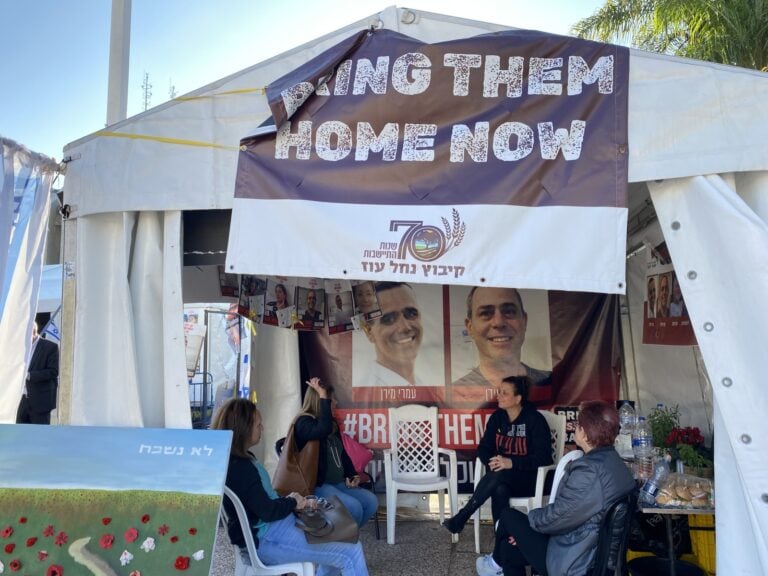
Telling the story is the task of every eclectic bit of art in the square.
From the painted little houses symbolizing the wanton destruction of peaceful homes, to the mannequin of a hooded little girl, her hands bound with rough rope.
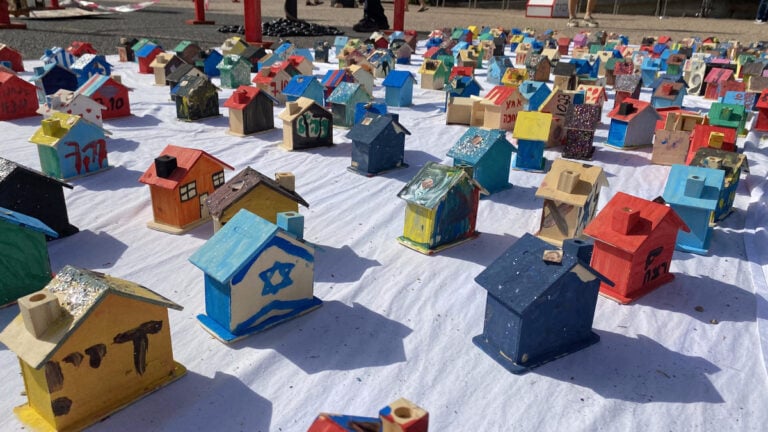
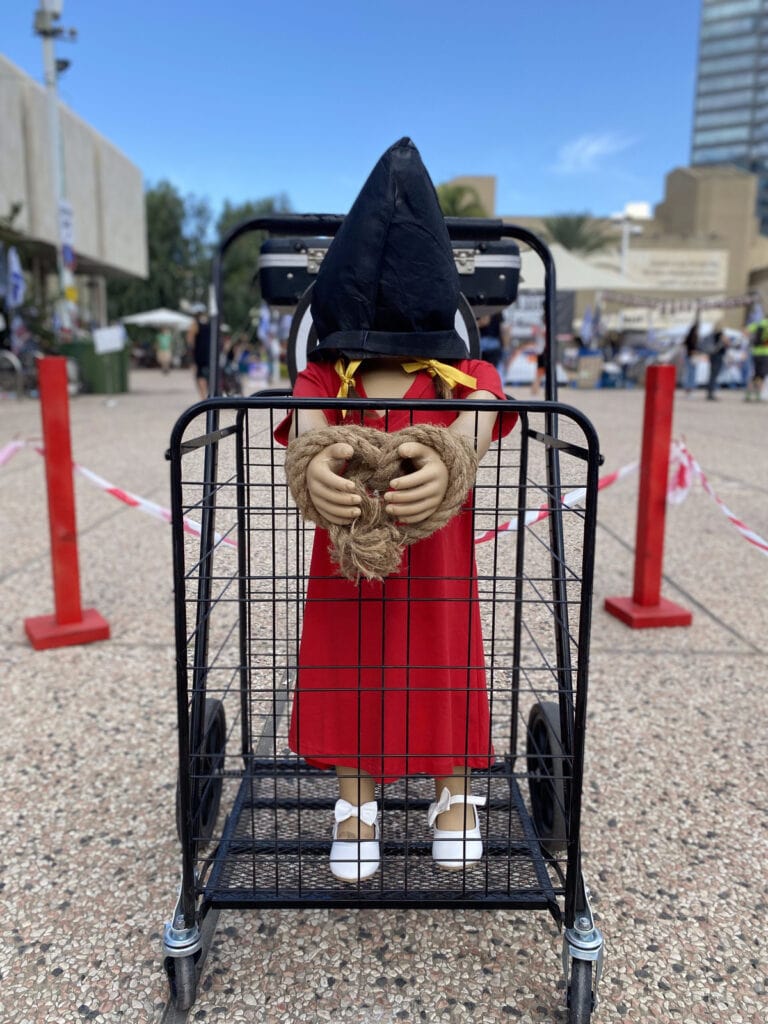
From the decorated stones arranged to spell out the Hebrew words for “We are waiting for you,” to the long, long Shabbat table set with places for every hostage, including highchairs for the tots.
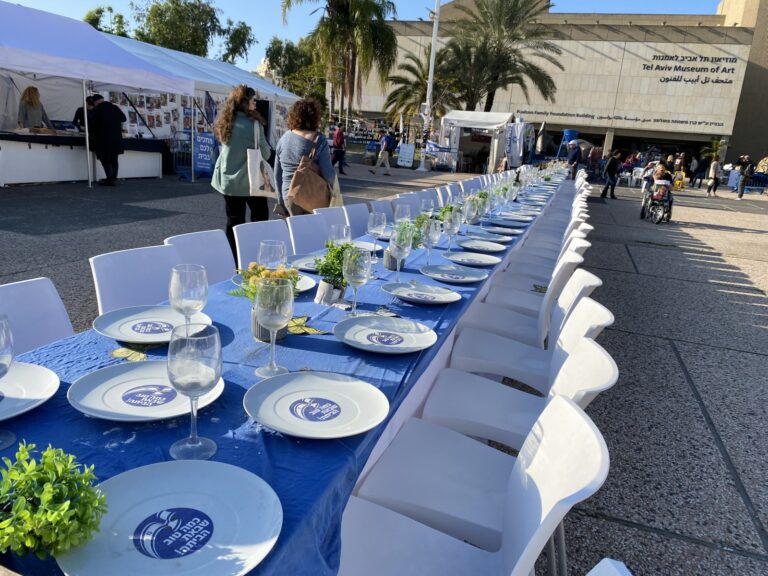
Telling the story is the self-appointed task of each volunteer here every day in tents like the one dedicated to the dead and kidnapped of Nahal Oz.
Every photograph of a missing person or hostage tells a piece of that story, whether affixed to a yellow chair, hanging from a tree or fence, or displayed inside a tent.
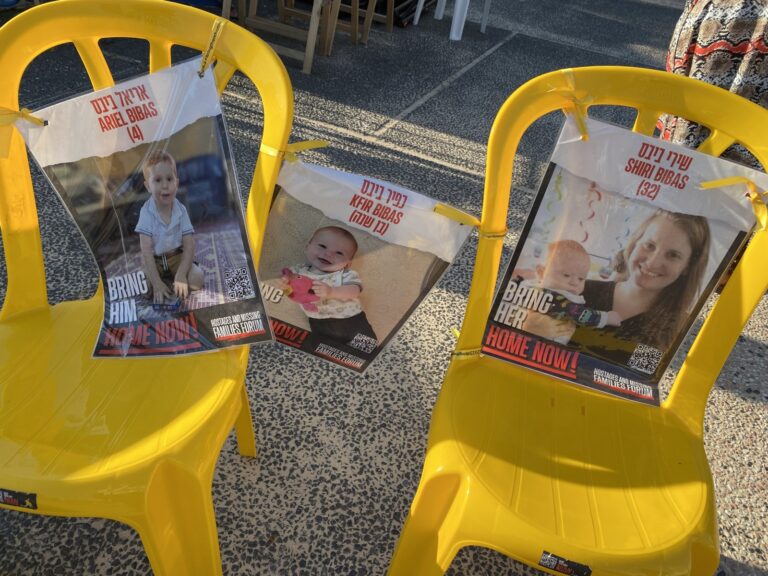
For the actual families and families in spirit, it is undoubtedly an emotional balm to see myriad messages of solidarity posted across the square from well-wishers across the world.
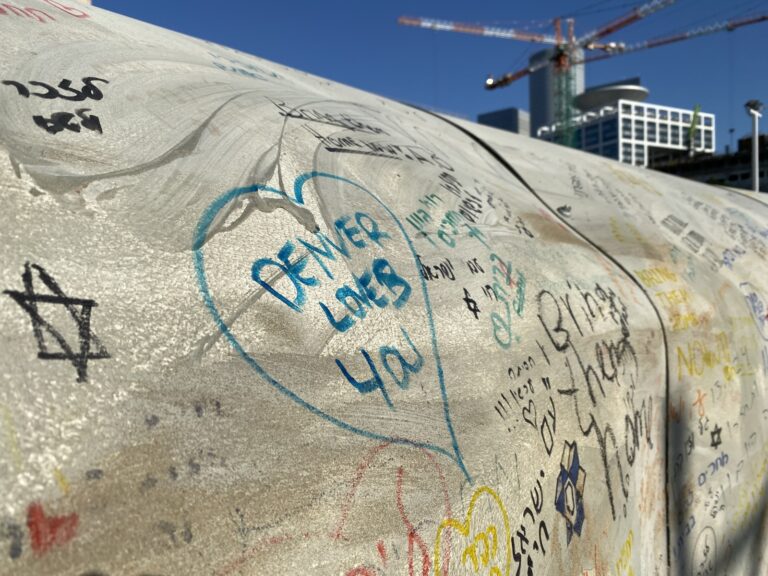
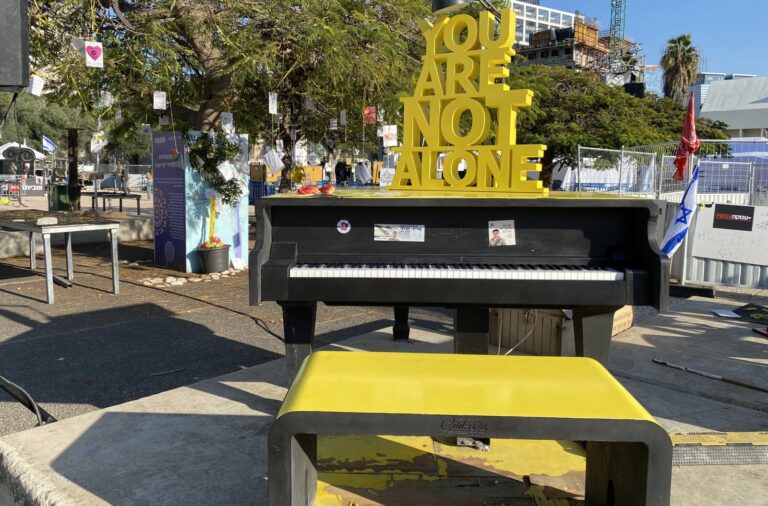
I read tree tags from Berlin, Mexico and The Netherlands on the Tree of Wishes, adorned with cards from Jewish schoolchildren in an assortment of languages. This project was part of the UnitEd program of the Ministry of Diaspora Affairs and Combating Antisemitism, which works with 650 schools worldwide.
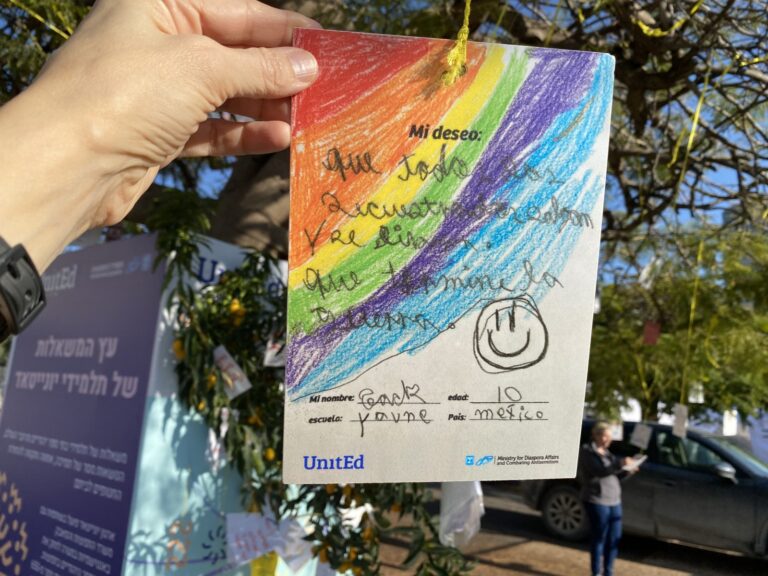
I wandered into a large tent where an educator guide was telling a visiting group in English about lessons learned from how Jewish communities in various countries handled hostage crises over the past centuries.
He explained the impossible calculus that must be considered when weighing the options. Securing the release of hostages “at any price” often leads to further kidnappings and higher ransoms, as well as hundreds or thousands of convicted terrorists let loose from prison.
The other side of the equation, of course, is the Jewish principle of “All Israel is responsible for one another” and the raw, aching need for every hostage to come home ASAP.
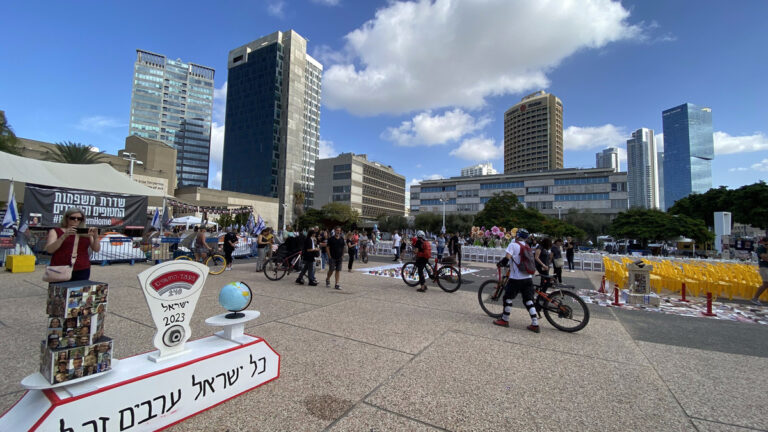
Here in the plaza, the central theme emblazoned everywhere is “Bring Them Home Now,” reflecting the simple mathematics of the affected families.
I imagine that everyone who visits this plaza feels, as I did, that some of the pain expressed verbally and visually is now sitting heavily on their own shoulders.
An electronic sign caught my eye as I left, bearing a countdown of the days, hours, minutes and seconds of captivity. How high will the numbers go? How high will the price be?
